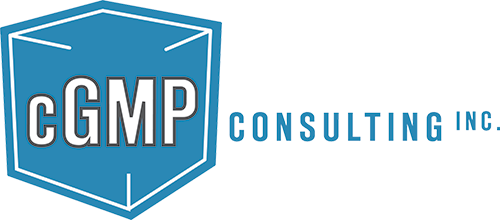
Immediate Steps to Take After Receiving an FDA 483: Don’t Risk a Warning Letter
Receiving an FDA 483 (often referred to as simply a 483) can be a stressful and pivotal moment for any company in regulated industries such as pharmaceuticals, medical devices, cosmetics, food, or dietary supplements. This document is issued by FDA inspectors when they identify conditions that may violate industry regulations during an inspection. While a 483 is not an official FDA action, failing to address its observations can escalate into more serious consequences, including Warning Letters, product recalls, or even legal action.
According to the FDA, companies have 15 working days to respond to a FDA 483, starting from the day the 483 is issued. A timely, thorough response demonstrates your company’s commitment to compliance and the safety of your products and can significantly impact the FDA’s decision on whether further enforcement actions are needed. This article will outline the immediate steps your organization should take upon receiving a FDA 483 to mitigate risks, prevent escalation, and maintain compliance.
The Consequences of Ignoring an FDA 483
Ignoring an FDA 483 or submitting a delayed or inadequate response can result in several severe consequences, such as:
- Issuance of a Warning Letter: A Warning Letter is a more serious notification that indicates a failure to adequately address the 483. This can lead to public disclosure, harming your reputation.
- Product Recalls: Severe findings can trigger mandatory product recalls, which incur significant costs and damage consumer trust.
- Legal Action: The FDA may pursue legal action if the issues are not resolved, leading to potential fines and operational shutdowns.
Given these potential outcomes, addressing the observations in a FDA 483 quickly and thoroughly is critical.
1. Understand the FDA 483 Findings: Don’t Panic, Act Swiftly
The first step is to thoroughly review the 483. Each observation should be carefully studied to understand its nature and potential risk to product quality and regulatory compliance. Assemble a cross-functional team to analyze the findings. This team should include:
- Quality Assurance.
- Department heads from impacted areas (manufacturing, laboratory, etc.).
- Legal counsel (if necessary).
- Regulatory affairs experts (if applicable).
Approaching a 483 as an opportunity to improve operations and ensure full compliance with FDA regulations can help minimize its impact.
Key Points for Your Initial Review:
- Prioritize observations based on their risk level to patient or consumer safety and product quality.
- Cross-reference observations with existing Standard Operating Procedures (SOPs).
- Conduct a preliminary risk assessment to determine the scope of each issue.
2. Hold an Internal Strategy Meeting
After reviewing the findings, organize an internal meeting with senior management. Key discussion points should include:
- Prioritizing observations based on risk to product safety and compliance.
- Developing a Corrective and Preventive Action (CAPA) plan that includes both short-term fixes and long-term preventive measures.
- Assigning responsibilities for each corrective action.
- Determining if external consultants or legal experts are needed for guidance on complex observations.
3. Draft a Comprehensive, Timely Response
A well-crafted response is key to avoiding a Warning Letter. Use this formula:
- A Cover Letter: Acknowledge the issue and state your commitment to complying with FDA regulations.
- Root Cause Analysis: Conduct a thorough assessment of the problem.
- CAPA: Outline the need for immediate containment actions, followed by a detailed Corrective and Preventive Action plan with target dates.
- Supporting Evidence: Include clear, logically organized data to support your CAPA.
- Commitment to Follow Up: Provide realistic but prompt timelines for progress and completion.
If some issues can’t be fully resolved within 15 days, outline a plan and timeline for addressing them. The FDA values transparency and a cooperative approach.
4. Initiate CAPA Immediately
Begin working on your CAPA plan as soon as you receive the 483. Immediate action demonstrates your commitment to resolving the issues. CAPA actions might include:
- Revising Standard Operating Procedures (SOPs).
- Conducting staff training to ensure compliance.
- Upgrading facilities or equipment.
- Strengthening auditing and monitoring procedures.
Document all actions taken to strengthen your response and protect your company during follow-up inspections.
5. Seek External Expertise if Needed
If the observations in the 483 are complex or outside your team’s expertise, consider engaging external consultants who specialize in FDA compliance. Companies like cGMP Consulting have over 23 years of experience assisting companies with FDA responses. Our services include:
- Crafting or reviewing FDA responses to align with best practices.
- Assisting in the creation and execution of CAPA plans.
- Conducting staff training.
- Auditing facilities, processes, and procedures for continuous improvement.
Preventive consultation is an investment that can save your company from the higher costs of receiving a Warning Letter, production interruptions, and potential legal action.
6. Develop a Long-Term Compliance Plan
After addressing the immediate concerns, focus on long-term compliance. A robust compliance strategy should include:
- Periodic internal audits.
- Ongoing staff training programs.
- Continuous improvement of quality management systems.
- Regular monitoring of CAPA effectiveness.
7. Maintain Communication with the FDA
Prepare for potential follow-up inspections by demonstrating a strong commitment to long-term compliance. Stay in contact with the FDA after submitting your response. Keep the agency informed of your progress, and promptly respond to any additional requests. This ongoing communication builds trust and reduces the risk of further enforcement actions.
Conclusion
Receiving an FDA 483 is serious but manageable if addressed properly. By acting swiftly, thoroughly, and transparently, your company can avoid more severe consequences and demonstrate a commitment to regulatory compliance.
Key takeaways:
- Understand the observations
- Develop and execute a comprehensive CAPA plan
- Maintain open communication with the FDA
Compliance is critical in regulated industries, and a proactive response can turn an FDA 483 into an opportunity for operational improvement. Don’t risk a Warning Letter—take the right steps now to protect your business and uphold trust with regulators, customers, and stakeholders.






